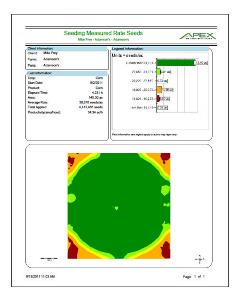Mega Menu
Mega menu is possible in BS5 but we will need to create a custom template layout for the navigation widget. The following is a hard-coded example.

Font Awesome 6
FA6+ icons will work on all widgets.
The FMH Icon box will need a new version created because the styling is broken in Bootstrap 5 templates (this has nothing to do with FA).
FMH Icon Widget
Icons can now be used in Content blocks by pasting the HTML tags from www.fontawesome.com into the HTML editor.
Here are some new icons from Font Awesome 6
face-awesome
envelopes
wheat-awn
Bootstrap Components
Code snippits from http://getbootstrap.com pasted into Content Blocks.
h1. Bootstrap heading
h2. Bootstrap heading
h3. Bootstrap heading
h4. Bootstrap heading
h5. Bootstrap heading
h6. Bootstrap heading
Nav Tabs
Nav Pills
Accordion
.accordion-body, though the transition does limit overflow.
.accordion-body, though the transition does limit overflow.
.accordion-body, though the transition does limit overflow.
Tables
| # | First | Last | Handle |
|---|---|---|---|
| 1 | Mark | Otto | @mdo |
| 2 | Jacob | Thornton | @fat |
| 3 | Larry the Bird | ||
Alerts
Image Carousel
Modals
Sitefinity Widgets
Default, out of the box, Bootstrap 5 templates available for widgets.
The navigation template used above is called Horizontal.
Navigation Widget - Tabs Template
Navigation Widget - Pills Template
Breadcrumb


List Widget - Expandable List Template
Precision Claims FAQs
List Widget - Simple List Template
Crop Claims Reminders
-
How To Report MPCI Claims
-
MPCI Claim Reporting Deadlines
-
Appraisals
-
Production Records by Unit
-
Production Delivered to a Commercial Elevator
-
Production From Precision Farming Technology Systems
-
Production Weighed and Farm Stored
-
Authorization for Load Records, Storage Structure Marking, or Combine Monitor Records
-
Fed Production
-
Quality Adjustment
-
What is a Simplified Claim?
-
What can insureds do to expedite the claim process?
List Widget - Anchor List Template
Quality Control Review FAQ
- What can an Insured do to prepare for a review?
- What can Agents do to prepare for a review?
- How does the review process begin?
Quality Control Review FAQ
What can an Insured do to prepare for a review?
Third party documentation (i.e. summary/settlement sheets from the elevator) is required when applicable and available. Insureds are expected to have available hard copy records that will 1) support the total production raised for the crop/county/year being reviewed and 2) that can demonstrate how production was kept separate between various units, practices and types (if applicable).
Insureds will also want make themselves available to meet with the quality control reviewer as the reviews will need to be completed before the claims can be processed.
What can Agents do to prepare for a review?
How does the review process begin?
Documents List - Documents List Template
Documents List - Documents List Template
| Title | Type | Size | |
| 602 KB | DownloadFMHQ Release 2 Guide | ||
| 405 KB | DownloadWFRP Checklist for Agents 2026 | ||
| 504 KB | DownloadWFRP Policy Provisions 2026 | ||
| 3231 KB | DownloadWFRP Handbook 2026 | ||
| 203 KB | DownloadECO_MCO_SCO_Coverage Comparison Flyer |
News Widget - News List Template
News list template is the only template available by default.
APH Yield Exclusion to be Implemented for 2015 Spring Crops
 In late October, Agriculture Secretary Tom Vilsack announced the implementation of a new Farm Bill initiative: the Actual Production History (APH) Yield Exclusion, available nationwide for farmers of select crops starting for Spring 2015.
In late October, Agriculture Secretary Tom Vilsack announced the implementation of a new Farm Bill initiative: the Actual Production History (APH) Yield Exclusion, available nationwide for farmers of select crops starting for Spring 2015. The APH Yield Exclusion allows farmers to exclude yields in exceptionally bad years (such as a year in which a natural disaster or other extreme weather occurs) from their production history when calculating yields used to establish their crop insurance coverage. The level of insurance coverage available to a farmer is based on the farmer’s average recent yields.
In the past, a year of particularly low yields that occurred due to severe weather beyond the farmer’s control would reduce the level of insurance coverage available to the farmer in future years. By excluding unusually bad years, farmers will not have to worry that a natural disaster will reduce their insurance coverage for years to come.
Under the new Farm Bill program, yields can be excluded from farm actual production history when the county average yield for that crop year is at least 50 percent below the 10 previous consecutive crop years’ average yield.
Spring crops eligible for APH Yield Exclusion include corn, soybeans, wheat, cotton, grain sorghum, rice, barley, canola, sunflowers, peanuts, and popcorn.
The USDA’s Risk Management Agency and Farm Service Agency staff worked hard to implement several 2014 Farm Bill programs ahead of schedule, such as Agricultural Risk Coverage (ARC), Price Loss Coverage (PLC), Supplemental Coverage Option (SCO) and Stacked Income Protection Plan (STAX). The USDA was able to leverage data from the ARC and PLC programs to extract the information needed to implement APH Yield Exclusion earlier than expected.
“Key programs launched or extended as part of the 2014 Farm Bill are essential to USDA’s commitment to help rural communities grow. These efforts give farmers, ranchers, and their families, better security as they work to ensure Americans have safe and affordable food,” said Vilsack. “By getting other 2014 Farm Bill programs implemented efficiently, we are now able to offer yield exclusion for Spring 2015 crops, providing relief to farmers impacted by severe weather.”
RMA will provide additional program details in December 2014.
Edited from USDA News Release No. 0233.14
Blog Posts Widget - Blog Posts Lists Template
-
Reporting Acreage with FMH Precision Solutions
Many policyholders already collect precision ag data during planting. Put that data to work to report acreage for crop insurance with FMH Precision Solutions.Full story -
Prepping Your Customers for Planting with Precision
Help your farmers use the precision data they're already collecting to simplify planting and reporting this spring.Full story -
Q&A with an FMH Precision Tech Specialist
Learn how our expert staff supports agents getting started with Precision SolutionsFull story -
Traditional vs. Precision Claims: What Are the Differences?
Oct 16, 2023, 14:01 by Eric RicheLearn how Precision Solutions can lead to simplified claims and easier APH reviews for your customers.Full story -
See How Precision Solutions Saves Premium and Improves APH
See the difference with examples from our recent FieldView™ Partner Connect webinar.Full story



